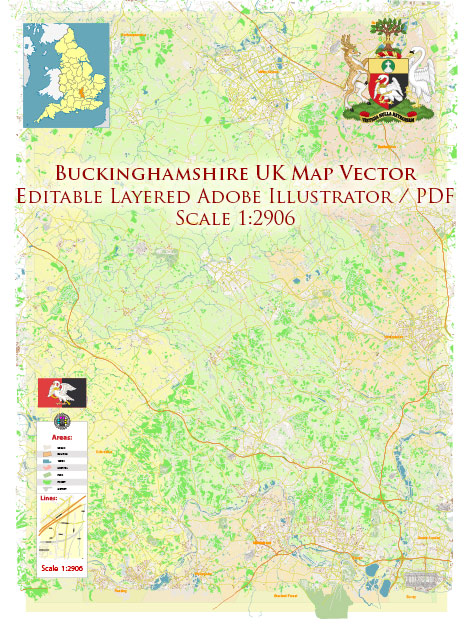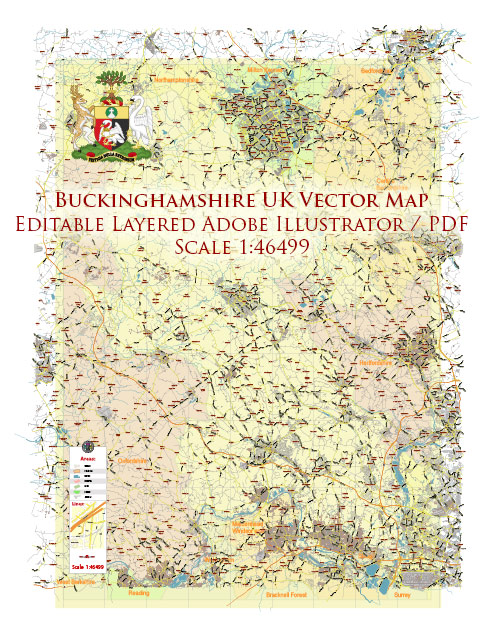Buckinghamshire is a historic county located in the South East region of England, United Kingdom. The county is known for its rich history, picturesque landscapes, and historic towns and villages. Here is a brief description of Buckinghamshire’s history:
- Ancient History: The history of Buckinghamshire dates back to ancient times, with evidence of human settlement in the area dating to the Paleolithic era. The Romans also had a presence in the region, and there are remnants of Roman villas and roads throughout the county.
- Anglo-Saxon Era: During the Anglo-Saxon period, Buckinghamshire was part of the Kingdom of Mercia. The town of Aylesbury, now the county town, was a significant center of administration and trade during this time.
- Norman Conquest: After the Norman Conquest of England in 1066, Buckinghamshire became a part of the newly established feudal system. The Normans built castles and established manors in the area, which played a significant role in shaping the county’s medieval history.
- Medieval Period: Buckinghamshire was predominantly an agricultural region during the medieval period. Several market towns, such as Buckingham and Wendover, developed during this time. The county also had a number of monastic houses, including Notley Abbey and Missenden Abbey.
- English Civil War: Buckinghamshire, like much of England, was affected by the English Civil War in the 17th century. The Battle of Aylesbury in 1642 was a significant conflict in the county, with forces loyal to Parliament defeating Royalist troops.
- Industrial Revolution: The Industrial Revolution had a significant impact on Buckinghamshire. While it remained primarily rural, industries such as lace-making, furniture production, and papermaking began to thrive in the 18th and 19th centuries.
- 19th and 20th Centuries: Buckinghamshire saw further development during the 19th and 20th centuries. The railway network expanded, connecting the county to London and other major cities. The Chiltern Hills, an Area of Outstanding Natural Beauty, attracted tourists and inspired artists and writers.
- Notable Figures: Buckinghamshire has been home to several notable historical figures, including the writer Roald Dahl, who lived in Great Missenden, and the poet John Milton, who was born in Cheapside, a hamlet near Chalfont St. Giles. Milton’s cottage is now a museum.
- Modern Buckinghamshire: Today, Buckinghamshire is a diverse and thriving county with a mix of urban and rural areas. It is known for its beautiful countryside, stately homes, and a strong economy, with many businesses and industries based in the region. In recent years, it has undergone administrative changes, with the creation of the unitary authority of Buckinghamshire Council in 2020.
Buckinghamshire’s rich history is evident in its historic buildings, museums, and cultural heritage, making it an attractive destination for those interested in exploring England’s past and enjoying its natural beauty.



 Author: Kirill Shrayber, Ph.D.
Author: Kirill Shrayber, Ph.D.